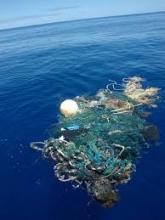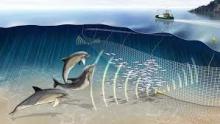Fish aggregating devices, or ‘FADs’, are floating objects, either natural or artificial, that attract and aggregate fish, including tuna schools. Silky and oceanic whitetip sharks are the main bycatch species in purse seine fisheries, incidentally caught when vessels fish on drifting FADs or entangled in the netting beneath FADs. Sea turtles are occasionally caught in seines and may be snared in the netting on, or under, FADs. Bycatch can be significantly reduced through effective FAD design (non-entangling, biodegradable) and management (e.g., limit FAD numbers & fishing seasons, shift a percentage of fishing effort to free schools, fish sharks from the net with handlines and release, target tuna schools greater than 10 tonnes, release sharks from deck using safe handling and release techniques).

